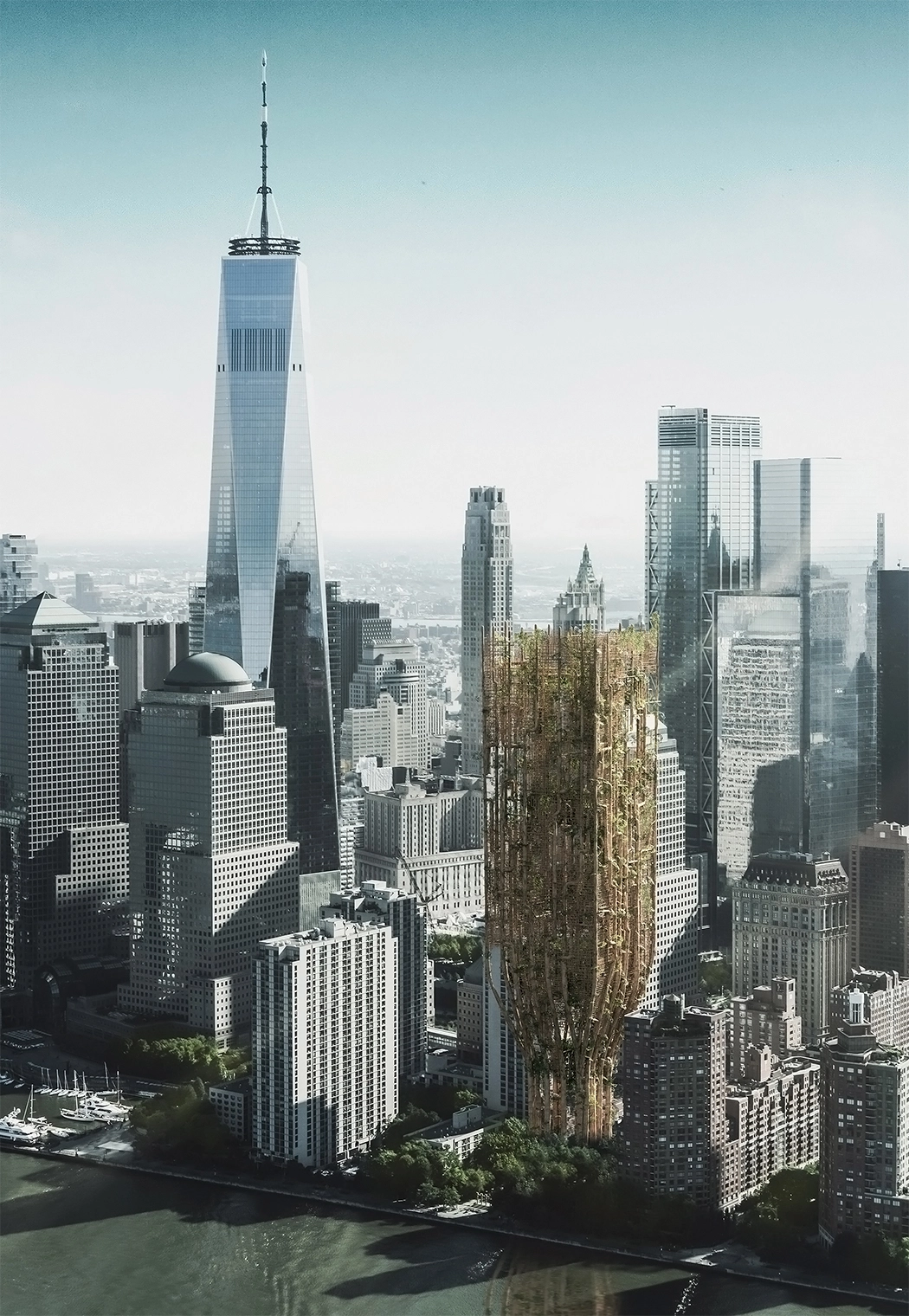By Akanimo Sampson
The 15th edition of the Abuja International Housing Show (AIHS) is expecting some of the major stakeholders to come up with more better concepts than this.Among 492 submissions that were received for the annual eVolo competition that has been running since 2006, this Living Skyscraper was chosen.
AIHS, the biggest housing and construction event in Africa is a major vehicle showcasing how Nigeria can overcome its housing crisis. At the moment, the country’s housing deficit stands at 22 million.

That is quite huge.Therefore, it will be heartwarming to see exhibitors at the event coming up with new innovations that will revolutionalise affordable housing in Nigeria.However, one of the main goals of the eVolo competition project is to grow a living skyscraper on the principle of sustainable architecture.
The ambitious architectural project has been envisioned for Manhattan and proposes using genetically modified trees to shape them into literal living skyscrapers. It is designed to serve as a lookout tower for New York City in the US with its own flora and fauna while encouraging ecological communications between office buildings and green recreation centers.
The building will function as a green habitable space in the middle of the concrete metropolis. By analysing the active process of urbanisation and a decrease in the percentage of green spaces, the Living Skyscraper is looking to solve a number of environmental and urban issues.
The Ukraine-based design team says, ”we believe that by integrating genetically modified trees during the stage of their growth and development into architecture, we can restore the balance between the digitalised megacities and the Earth’s resources, which are gradually depleted’.”
Think of it as a skyscraper tree, it is a separate living organism with its own root system, irrigation, maintenance mechanisms, and features focused on how it can be adapted in the traditional architecture-heavy city. The structure is formed with unique fast-growing and tall hardwood deciduous trees that are planted in groups in specially prepared soil. As these trees grow they also form a one-of-a-kind shape for the skyscraper while providing architectural volume.
The plants absorb water and nutrients which will be distributed from root to tip. Simultaneously, the growth of the trunk circumference will gradually increase the strength of the wood structure and improve its self-supporting properties for the building as a whole.During the development phase, the branches of nearby trees will be grafted at different levels to form a network that will strengthen the skyscraper as it continues to grow.
The team further explains how the branches of hybrid “trees of the future” will form the structure of a living skyscraper, form even, separate biomorphic structures, and feed on soil, water, and sun resources, forming an ecosystem that is essential for large agglomerations.
As it grows, a living skyscraper will connect with neighboring buildings and form green overhanging communications over a block. The Living Skyscraper won first place in eVolo’s 2021 Skyscraper Competition.
Designers: Andrii Lesiuk, Mykhaylo Kohut, Sofiia Shkoliar, Kateryna Ivashchuk, Nazarii Duda, Mariia Shkolnyk, Oksana-Daryna Kytsiuk, and Andrii Honcharenko.





